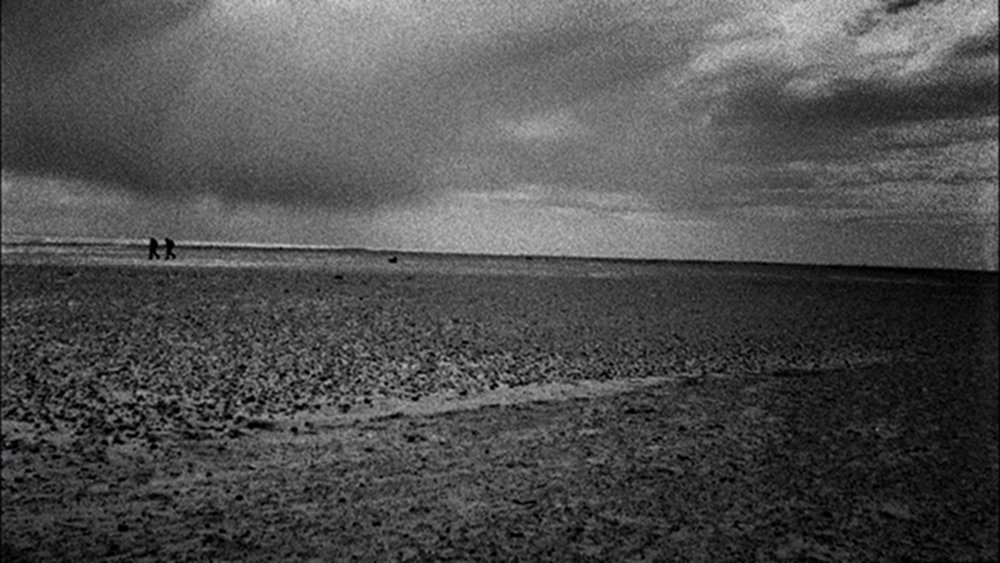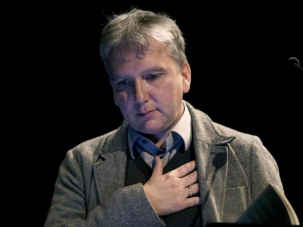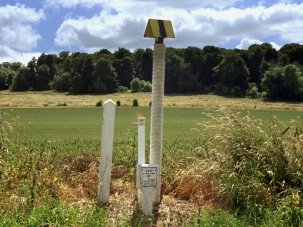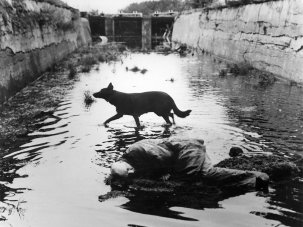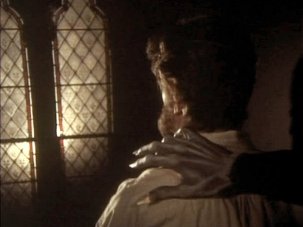The first time I saw Andrei Tarkovsky’s Stalker – when it was broadcast by Channel 4 in the early 1980s – I was reminded of the Suffolk landscapes where I had holidayed as a child. The overgrown pillboxes, the squat Martello towers, the rusting groynes that resembled gravestones: they all added up to a ready-made science-fiction scene. At one point in Grant Gee’s Patience (After Sebald) – an essay film inspired by author W.G. Sebald’s 1995 book The Rings of Saturn – theatre director Katie Mitchell makes the same connection, drawing a comparison between the demilitarised expanses of the Suffolk coast and Tarkovsky’s “Zone”.
When I read The Rings of Saturn, I was hoping that it would be an exploration of these eerily numinous spaces. Yet what I found was something rather different: a book that, it seemed to me at least, morosely trudged through the Suffolk spaces without really looking at them. Instead it offered a Mittel-brow miserabilism, a stock disdain, in which the human settlements are routinely dismissed as shabby and the inhuman spaces are oppressive. The landscape in The Rings of Saturn functions as a thin conceit; the places Sebald visits operate as triggers for a literary ramble that reads less like a travelogue than a librarian’s listless daydream. Rather than engage with previous literary encounters – with the Suffolk where Henry James went on a walking tour, or where his namesake M.R. James set two of his most atmospheric ghost stories – Sebald tends to reach for the likes of Borges.
My scepticism was nourished by the solemn cult that settled suspiciously quickly around Sebald and his books (Vertigo, The Emigrants and Austerlitz are the other main titles) – all the more so after his premature death in 2001. With his well-wrought sentences, Sebald offered a rather easy sort of difficulty – an anachronistic, antiqued model of ‘good literature’ that acted as if many of the developments in 20th-century experimental fiction and popular culture had never happened.
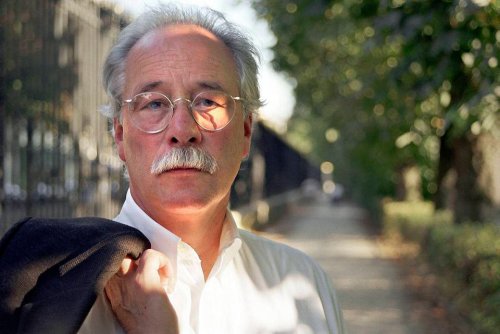
W.G. Sebald
Credit: Getty Images
It’s not hard to see why a German writer would want to blank out the middle part of the 20th century; and many of the formal anachronisms of Sebald’s writing – its strange sense that this is the modern world seen through the restrained yet ornate prose of an early 20th-century essayist – perhaps arise from this desire, just as his books themselves are about the various, ultimately failed ruses, conscious and unconscious, that damaged psyches deploy to erase traumas and construct new identities.
The writer Robert Macfarlane has called Sebald a “post-modern antiquarian”, and the indeterminate status of The Rings of Saturn – is it autobiography, a novel or a travelogue? – points to a certain playfulness; but this never emerges at the level of the book’s content. It was necessary for Sebald to remain po-faced in order for the ‘antiquing’ to be successful. Some of Gee’s images of Suffolk take their cue from the black-and-white photographs that illustrate The Rings of Saturn. But the photographs were a contrivance: they were snapshots that Sebald would photocopy many times until they achieved the required graininess.
Gee’s film premiered at Snape Maltings, near Aldeburgh in Suffolk, as part of a weekend of events superbly curated by Gareth Evans of Artevents under the rubric After Sebald: Place and Re-enchantment. But Sebald’s books fit only awkwardly into a discussion of place and enchantment – his work is more about displacement and disenchantment. In Patience (After Sebald), the artist Tacita Dean observes that only children have a real sense of home; adults are always aware of the transitoriness of their dwelling-place – none more so than Sebald, a German writer who spent most of his life in Norfolk.
Patience (After Sebald) follows Gee’s previous documentaries about Radiohead and Joy Division. The shift from rock to literature, Gee told Macfarlane, was one that came naturally to someone whose sensibilities were formed by the UK music culture of the 1970s, in which song titles were portals that could lead you to Conrad, Kafka or Ballard, and the music press – which for many of us then constituted a supplementary education system – would routinely reference Derrida and Baudrillard. If Sebald had been writing in the 1970s, Gee claimed, he would surely have been mentioned in the NME alongside other luminaries of avant-garde literature.

Patience (After Sebald) (2011)
The film’s somewhat gnomic title suggests the slowing of time that the Suffolk landscape imposes – a release from urban urgencies. But it actually turns out to be a reference to a passage in Sebald’s 2001 novel Austerlitz:
Austerlitz told me that he sometimes sat here for hours, laying out these photographs or others from his collection the wrong way up, as if playing a game of patience, and that then one by one, he turned them over, always with a new sense of surprise at what he saw, pushing the pictures back and forth and over each other, arranging them in an order depending on their family resemblances, or withdrawing them from the game until either there was nothing left but the grey tabletop, or he felt exhausted from the constant effort of thinking and remembering and had to rest on the ottoman.
Gee originally intended to make a film about the non-places in Sebald’s work: the hotel rooms or railway-station waiting-rooms in which characters ruminate, converse or break down. (Austerlitz himself comes to a shattering revelation about his own identity in the waiting-room at Liverpool Street station.) In the end, however, he was drawn to The Rings of Saturn, which – ostensibly at least – is most focused on a single landscape.
He filmed practically everything himself, using a converted 16mm Bolex camera; he wanted something that would produce frames that were “tighter than normal”, he said, “as if a single character is looking”. Gee sees Patience (After Sebald) as an essay film in the tradition of Chris Petit’s work and Patrick Keiller’s Robinson trilogy. But when I put it to him that Patience lacks the single voice that defines Petit or Keiller’s essay films, Gee responded self-deprecatingly. He had tried to insert himself into his own films, but he had always been dissatisfied with the results: his voice didn’t sound right; his acting didn’t convince; his writing wasn’t strong enough. In Patience, as in Joy Division (2008), the story is therefore told by others: Macfarlane, Dean, Petit, Iain Sinclair, the literary critic Marina Warner and the artist Jeremy Millar, who provides one of the film’s most uncanny images. When he lit a firework in tribute to Sebald, the smoke unexpectedly formed a shape that resembled Sebald’s face – something Gee underlines in the film by animating a transition between Millar’s photograph and an image of the novelist.
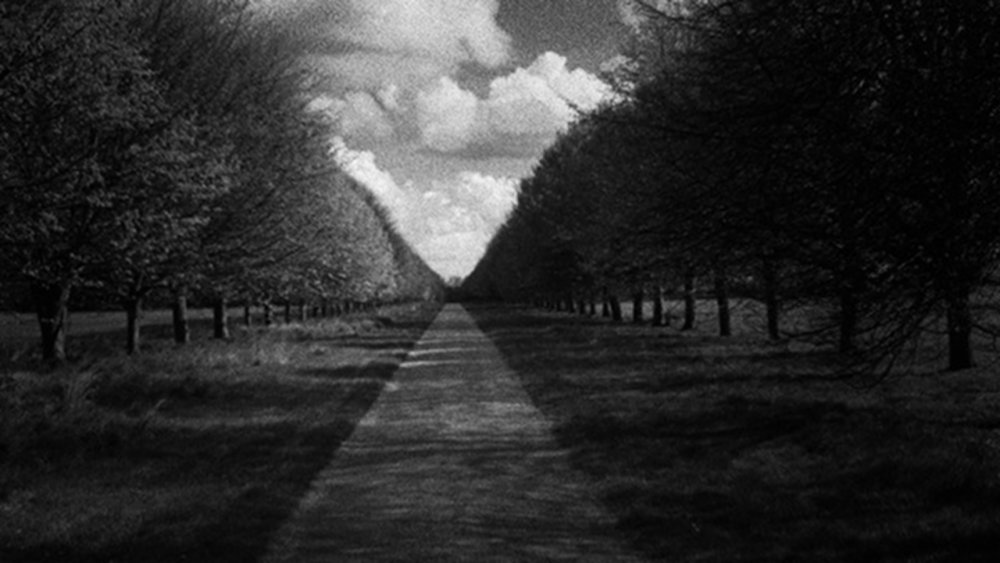
Patience (After Sebald) (2011)
More than one of the speakers at the Towards Re-enchantment symposium acknowledged that they misremembered The Rings of Saturn. There’s something fitting about this, of course, given that the duplicity of memory might have been Sebald’s major theme. But my suspicion is that misremembering of a different kind contributes to the Rings of Saturn cult. The book induces its readers to hallucinate a text that is not there, but which meets their desires – for a kind of modernist travelogue, a novel that would do justice to the Suffolk landscape – better than Sebald’s book actually does.
Patience (After Sebald) is itself a misremembering of The Rings of Saturn that can’t help but reverse the book’s priorities. In the book, Suffolk frequently recedes from attention, as Sebald follows his own lines of association. By contrast, the main substance of the film consists of images of the Suffolk landscape: the heathland over which you can walk for miles without seeing a soul; the crumbling cliffs of the lost city of Dunwich; the enigma of Orford Ness, its inscrutable pagodas silently presiding over Cold War military experiments that remain secret. Sebald’s reflections, voiced in Patience by Jonathan Pryce, anchor these images far less securely than they do in the book.
At the Snape event, some of those who had re-created Sebald’s walk (including Gee himself) confessed that they had failed to attain the author’s lugubrious mood; the landscape turned out to be too energising, its sublime desolation proving to be fallow ground for gloomy psychological interiority. In a conversation with Robert Macfarlane after the screening of the film, Gee said that it was not really necessary for Sebald to have taken the walk. He meant that it was not important whether or not Sebald actually did the walk exactly as The Rings of Saturn’s narrator describes it, in one go – that the book could have been based on a number of different walks over a longer period of time. But I couldn’t help but hear Gee’s remark in a different way: that it was not necessary for Sebald to have taken the walk at all – that, far from being a close engagement with the Suffolk terrain, The Rings of Saturn could have been written if Sebald had never set foot in Suffolk.

Patience (After Sebald) (2011)
This was the view of Richard Mabey, cast in the role of the symposium’s doubting Thomas. Mabey (who has written about nature for 40 years, and whose latest book Weeds has the glorious subtitle How Vagabond Plants Gatecrashed Civilization and Changed the Way We Think About Nature) argued that Sebald was guilty of the pathetic fallacy. When he read The Rings of Saturn, Mabey said, he felt as if a very close friend had been belittled; although he had walked the Suffolk coast countless times, he couldn’t recognise it from Sebald’s descriptions.
But perhaps the issue with Sebald is that he wasn’t guilty enough of the pathetic fallacy. Instead of staining the landscape with his passions – as Thomas Hardy did with Wessex or the Brontës with Yorkshire or, more recently, as the musician Richard Skelton has done with the Lancashire moorland – Sebald used Suffolk as a kind of Rorschach blot, a trigger for associative processes that take flight from the landscape rather than take root in it. In any case, Mabey wanted a confrontation with nature in all its inhuman exteriority. He sounded like a Deleuzean philosopher when he talked of the “nested heterogeneity” and “autonomous poetry” of micro-ecosytems to be found in a cow’s hoof print.
I was struck by the parallels between Mabey’s account of nature and Patrick Keiller’s invocation of lichen as “a non-human intelligence” in last year’s Robinson in Ruins. With its examination of the “undiscovered country of nearby”, Robert Macfarlane’s 2010 BBC film The Wild Places of Essex (shown as part of the symposium) was also close to Mabey’s vision of a nature thriving in the spaces abandoned by humans. (Macfarlane’s film is a counterpart to Julien Temple’s wonderful Oil City Confidential, which roots Dr Feelgood’s febrile R&B in the lunar landscape of Essex’s Canvey Island.)
Patience (After Sebald) could appeal to a Sebald sceptic like me because – in spite of Sebald – it reaches the wilds of Suffolk. At the same time, Gee’s quietly powerful film caused me to doubt my own scepticism, sending me back to Sebald’s books in search of what others had found in them.
-
The Digital Edition and Archive quick link
Log in here to your digital edition and archive subscription, take a look at the packages on offer and buy a subscription.




